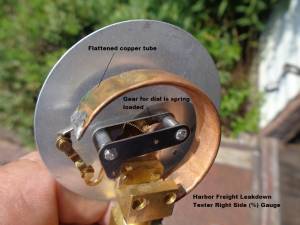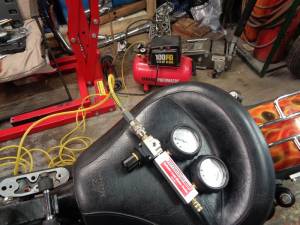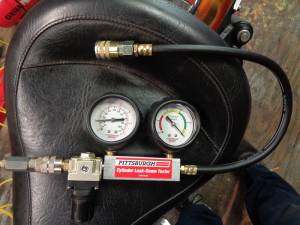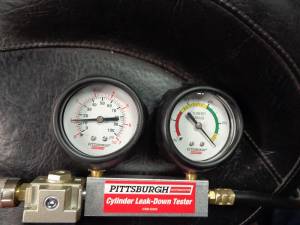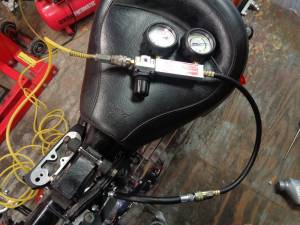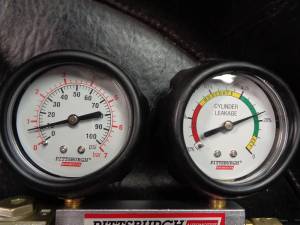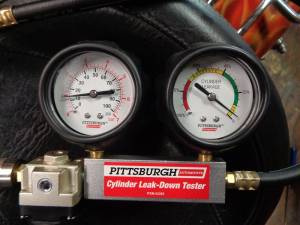Table of Contents
This is an old revision of the document!
REF: Tools - 148
Cylinder Leak-Down Tester
This is basically a flow meter showing the differential pressure between the two gauges.
Simply put, the left gauge measures incoming pressure from the air tank and the right gauge measures the pressure lost thru leakage in the cylinder.
Setting up the Gauge
- Turn the regulator all the way to the left (off) before hooking the tool up to an air supply.
Failure to do so can result in damage to the gauge(s).
- Most gauges are subject to damage from dropping / abuse.
- The pic below demonstrates how easy this one from Harbor Freight can get out of calibration.
The face dial is driven by air pressure thru a flattened copper tube with down-weight from a long armed gear that actuates a spring loaded mechanism to the dial.
One good hit and the weight can ping the spring out of calibration.
Driving the air pressure past zero and enough to ping against the dial stop can also damage the spring.
The gauge will still work, but the dial will stop at various unusable locations.
- Slowly, turn the regulator valve to the right to increase the pressure thru the tool.
- Stop turning the valve when the right gauge reaches '0'.
The regulator gives air to both gauges at the same time.
So, both gauges will increase together. However, these two gauges are not calibrated the same.
So, the right will increase all the way to the zero mark before the left gains much pressure.
With this particular tool, the left gauge will be near 1 bar (14.5 psi) although it may vary slightly.
Now, your ready to start the test.
Test the Cylinder for Leaks
- Note the pressure reading on the left gauge.
- Attach the engine side hose to the gauge and watch the readings.
Both gauges will have lower readings due to the tool filling up the cylinder.
The closer the piston is to TDC, the less area to fill and the gauge will rest at it's static residual pressure on the gauges.
Likewise, the lower the piston, the more volume of air is needed to fill the chamber.
Then, more pressure will drop but it will catch back up when the cylinder is pressurized and you'll see the gauges bounce back up to a static number.
- Now increase the pressure. Turn the regulator valve up to get the pressure on the left gauge back to the same point as before it was attached to the engine side hose.
(in this case, near 1 bar) - Note the right gauge reading: This gauge should now show a lower reading than it did when the tool was set up:

